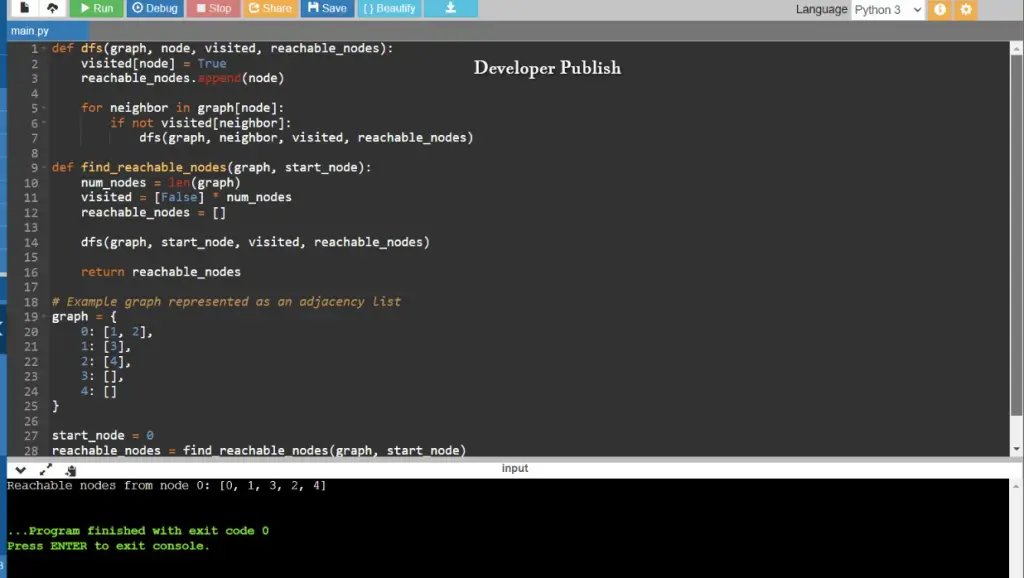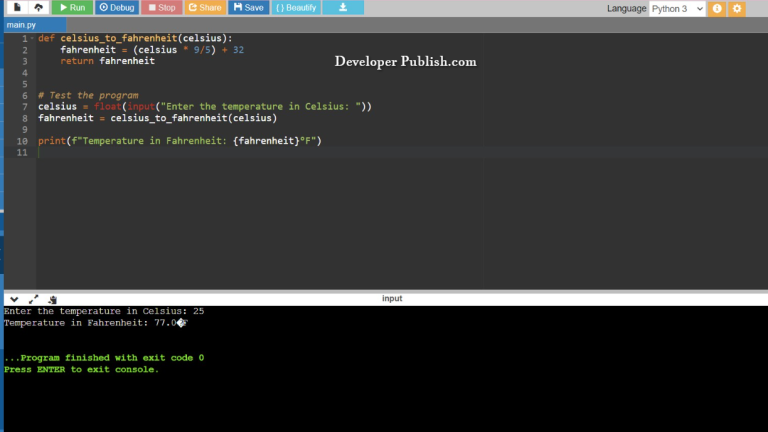This Python program utilizes Depth-First Search (DFS) to find all reachable nodes in a given graph. DFS is a graph traversal algorithm that explores as far as possible along each branch before backtracking.
Problem Statement
Given a graph represented as an adjacency list, write a program to find all the nodes that are reachable from a given starting node using Depth-First Search (DFS).
Python Program to Find All Reachable Nodes in a Graph using DFS
def dfs(graph, node, visited, reachable_nodes):
visited[node] = True
reachable_nodes.append(node)
for neighbor in graph[node]:
if not visited[neighbor]:
dfs(graph, neighbor, visited, reachable_nodes)
def find_reachable_nodes(graph, start_node):
num_nodes = len(graph)
visited = [False] * num_nodes
reachable_nodes = []
dfs(graph, start_node, visited, reachable_nodes)
return reachable_nodes
# Example graph represented as an adjacency list
graph = {
0: [1, 2],
1: [3],
2: [4],
3: [],
4: []
}
start_node = 0
reachable_nodes = find_reachable_nodes(graph, start_node)
print(f"Reachable nodes from node {start_node}: {reachable_nodes}")
How It Works
- The
dfsfunction performs the DFS traversal. It takes the graph, current node, visited array, and a list to store reachable nodes as inputs. - For each node visited during the DFS traversal, it is marked as visited and added to the list of reachable nodes.
- The function iterates through the neighbors of the current node and recursively explores unvisited neighbors.
- The
find_reachable_nodesfunction initializes the visited array, then starts the DFS traversal from the given start node. - The program finally prints the list of reachable nodes.
Input/Output



